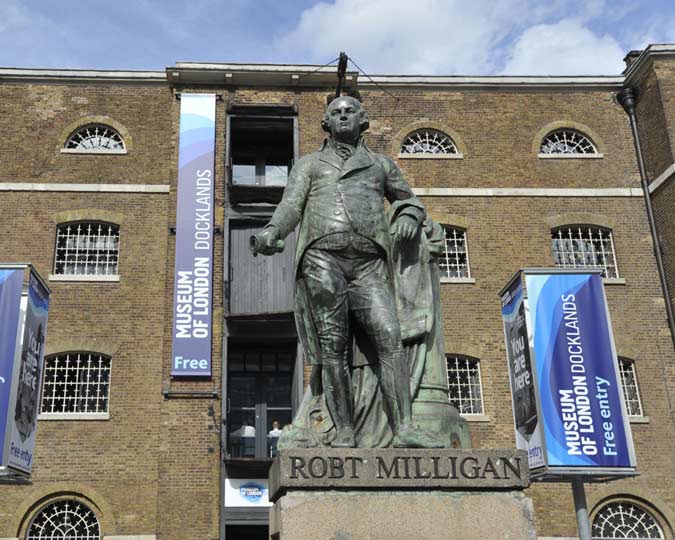Gallery access
London, Sugar & Slavery gallery
10am – 5.30pm
Access via lift
A challenging display investigating the relationship between European culture and transatlantic slavery.
The latest display in the London, Sugar and Slavery gallery at the Museum of London Docklands highlights the connection to slavery of some of Britain's oldest cultural organisations. See a map of how London's Docklands are connected to slavery.
Slavery, culture and collecting follows slave owner and art collector George Hibbert, a prominent member of a large subsection of British society which derived its wealth directly from the slave economy. These figures were often active philanthropists, and are commemorated in memorials for their associations with charitable causes, while their connections to slavery are invisible even today.
Hibbert was instrumental in building the West India Docks which now house the Museum of London Docklands. This connection positions the museum as an important place to think about the relationship between slavery and cultural heritage.
The wealth generated by slavery was used to create cultural institutions such as museums, universities, art galleries and charities. Advocates of slavery would then use culture in their arguments for the continuing use of enslaved labour, on the grounds that Africans needed the "civilising influence" of Europe.
The display contains a short film, as well as objects from the collection to encourage further debate around this challenging issue.
Slavery, culture and collecting is delivered with the support of the Antislavery Usable Past project at the University of Nottingham.
London, Sugar & Slavery gallery
Access via lift

How has the Atlantic slave trade left its mark on London?
Read now